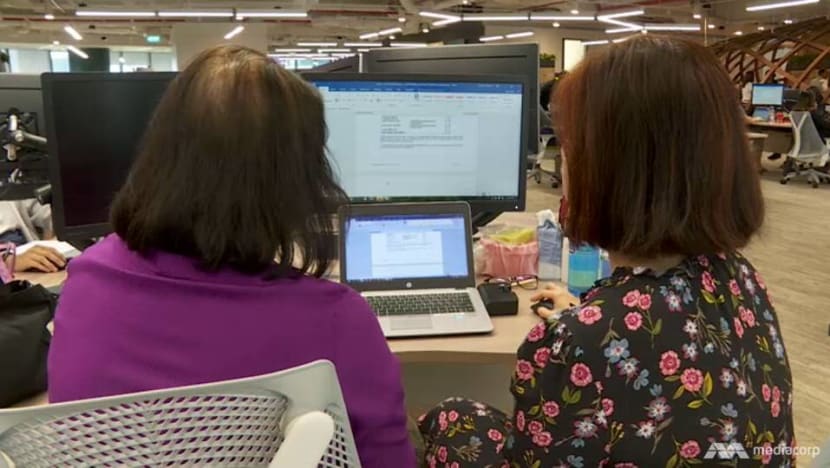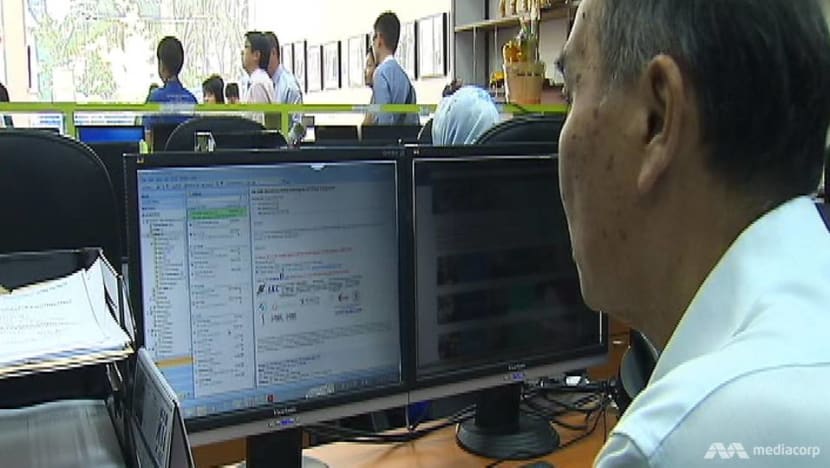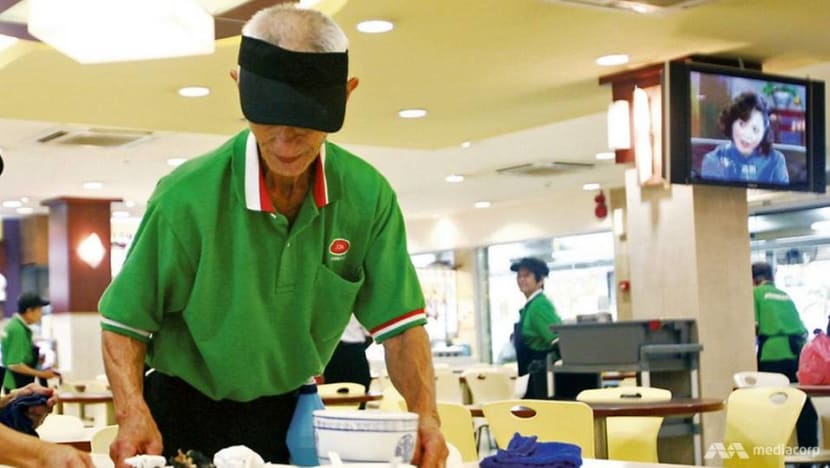commentary Commentary
Commentary: Watch for casual ageism and other signs of caustic attitudes about older workers
At the heart of concerns over raising the retirement age and CPF contribution rates is an insidious belief that older workers are worth less.

File photo of office workers.
SINGAPORE: Prime Minister Lee Hsien Loong made a significant announcement during his National Day Rally on Sunday (Aug 18), to raise both the retirement and re-employment ages in 2022 and 2030.
The Singapore Business Federation backed the move and called on its 26,100 member-companies to give their support.
The public service also committed to making these shifts a year ahead of the timelines set by PM Lee.
The news was quickly followed up by Manpower Minister Josephine Teo, who dished out details of the increases to the total contribution rates older workers can look forward to in their Central Provident Fund (CPF), which was another announcement that PM Lee made on Sunday.
ATTITUDES ON AGE HAVE SOME WAY TO GO
Taken altogether, this past week must seem like a win for employment advocates.
This was a milestone to be celebrated, after the tripartite workgroup’s efforts since last May to build consensus on the way forward on keeping older workers employed and helping them achieve retirement adequacy as Singaporeans lead longer lives.
READ: Commentary: Singapore’s bold bet on seniors and valuable years of life experience
But numerous comments online paint a different picture, suggesting that our attitudes about work in old age have some way to go.
“Can try but no company will employ older workers except in security and cleaning,” said one reader.
It’ll make older workers more expensive to companies, added another.
And why that would be an especially difficult problem? “Older workers are obsolete,” said a third.

One can appreciate how these changes may be a challenge for some businesses, especially small and medium-sized enterprises that may have practical concerns about being able to pay their older workers additional CPF contributions while battling global headwinds.
But it will be disconcerting if, after being given some time to adjust, we see many companies continue to highlight unease over these changes as cost pressures, suggesting that older workers as a whole contribute less than their fair share and are not worth the extra money compared to younger workers.
CUES OF AGEISM
At the heart of concerns this week may be our assumptions about old age.
It doesn’t help that we are regularly bombarded with images and language about disease and disability that might have reinforced the notion that life after 60 can only go downhill.
But it’s troubling if these lead us to internalise the idea that one inevitably becomes frailer, less productive and eventually, a drain on society - or worse, the belief that older workers are inherently worth less.
READ: Commentary: Growing old is not a slow march toward obscurity
Such attitudes can manifest in small ways, when we paint seniors with a broad brush and single them out, like when we say condescending things like older workers have to be lifelong learners who have to adapt better.
That must surely apply to every worker in an age of disruption.
Employers and supervisors should also watch for when such attitudes morph into a negative bias against older workers, which goes against the spirit of the lifting of the retirement and re-employment ages that the Tripartite Alliance for Fair and Progressive Employment Practices (TAFEP) might have to look into.

We ourselves also have to look out for other subtle but just as unhealthy cues of ageist mindsets in our day-to-day actions - for instance, if we subconsciously exclude an older team mate from work projects or social activities.
Although such acts might not cross the threshold of workplace discrimination warranting action by TAFEP, the poisonous sentiment behind them is precisely what that can fuel a larger disenfranchisement of seniors.
TACKLE THAT DANGEROUS NARRATIVE OF AGEISM
Ageism is that dangerous narrative that frames a future of longevity as a tsunami of a problem instead of the remarkable achievement and potential that longer lives present.
Casual ageism cuts both ways when we think there are some tasks that we might be too old for and some responsibilities that we might be too young to assume.
For all the talk about the importance of removing divisions concerning class, race and gender, ageism is the one social divide we have ignored yet need to tackle decisively. After all, we will all suffer the brunt of it when we cross into that later stage in life.
READ: Commentary: Meet Sofia, the 67-year-old widow who uses Pokemon Go to fight depression

The WHO also recognises the flipside of the coin - that positive views about ageing lead to better “healthspans” because people lead longer lives, recover faster from illness and are less susceptible to cognitive decline.
GOOD MOVES TO MOVE AGEISM NEEDLE
Massive effort will be needed to move that attitude needle of ageism.
It will take companies making that gesture of confidence to raise the retirement and re-employment age beyond statutory requirements to catalyse that shift, like those 50 that put up their hands which NTUC Secretary-General Ng Chee Meng talked about.
READ: Commentary: Living longer? Here’s what working for 60 years should look like
Here, Prudential’s moves to scrap the notion of a retirement age altogether and allow employers to continue working past 62 under the same terms and conditions until they decide to call it a day, as well as to raise their CPF contributions above mandated levels, are bold moves that deserve special mention worth considering emulating.
It will also take employers relooking flexible work arrangements and wage structures that reflect varying needs in life stages, like what Nominated Member of Parliament and Associate Professor Walter Theseira suggested, so that older workers can work at their own pace, in the same way many parents, people with family commitments and other priorities in life would like to.

But most importantly, it will take every one of us to re-examine our attitudes about age.
And a constructive first step is to be wary of grouping people by age and reducing them to a faceless, homogenous group.
Lin Suling is executive editor at CNA Digital News where she oversees the Commentary section and produces The Pulse podcast.












